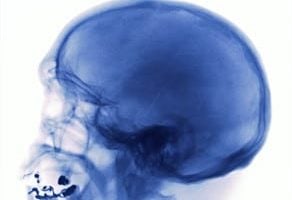functional magnetic resonance imaging
Tobacco smoking impacts teens’ brains, UCLA study shows
Tobacco smoking is the leading preventable cause of death and disease in the U.S., with more than 400,000 deaths each year attributable to smoking or its consequences. And yet teens still smoke. Indeed, smoking usually begins in the teen years, and …
Brain imaging provides window into consciousness
NEW YORK (Feb. 25, 2011) — Using a sophisticated imaging test to probe for higher-level cognitive functioning in severely brain-injured patients provides a window into consciousness — but the view it presents is one that is blurred in fascinating …
Crying baby draws blunted response in depressed mom’s brain
EUGENE, Ore. — Mothers who are depressed respond differently to their crying babies than do non-depressed moms. In fact, their reaction, according to brain scans at the University of Oregon, is much more muted than the robust brain activity in no…
Brain doesn’t need vision at all in order to ‘read’ material
Jerusalem, February 22, 2011 — The portion of the brain responsible for visual reading doesn’t require vision at all, according to a new study by researchers from the Hebrew University of Jerusalem and France.
Brain imaging studies of blind …
Brain scans predict likely success when it comes to quitting smoking
New research from University of Michigan says brain scans showing neural reactions can predict behavior change even better than the person whose brain is being scanned.
Emily Falk, director of University of Michigan’s Communication Neuroscience La…
Where unconscious memories form
A small area deep in the brain called the perirhinal cortex is critical for forming unconscious conceptual memories, researchers at the UC Davis Center for Mind and Brain have found.
The perirhinal cortex was thought to be involved, like the neigh…
Insulin sensitivity may explain link between obesity, memory problems
AUSTIN, Texas — Because of impairments in their insulin sensitivity, obese individuals demonstrate different brain responses than their normal-weight peers while completing a challenging cognitive task, according to new research by psychologists …
The neural basis of the depressive self
Depression is actually defined by specific clinical symptoms such as sadness, difficulty to experience pleasure, sleep problems etc., present for at least two weeks, with impairment of psychosocial functioning. These symptoms guide the physician to …
New findings could lead to higher resolution functional MRIs
New findings by researchers at the University of California, Berkeley, could significantly improve the resolution of scans from functional magnetic resonance imaging, one of neuroscience’s most powerful research tools to date. Functional MRI (fMRI) is a non-invasive procedure that detects increased levels of blood flow into certain areas of the brain to infer neural activity. But in a study published Feb. 14 in the journal Science, researchers from UC Berkeley’s Group in Vision Science show that an initial decrease in oxygen levels is an earlier and more spatially precise signal of nerve cell activity.
Brain images reveal effects of antidepressants
The experiences of millions of people have proved that antidepressants work, but only with the advent of sophisticated imaging technology have scientists begun to learn exactly how the medications affect brain structures and circuits to bring relief from depression. Researchers at UW-Madison and UW Medical School recently added important new information to the growing body of knowledge. For the first time, they used functional magnetic resonance imaging (fMRI)–technology that provides a view of the brain as it is working–to see what changes occur over time during antidepressant treatment while patients experience negative and positive emotions.

